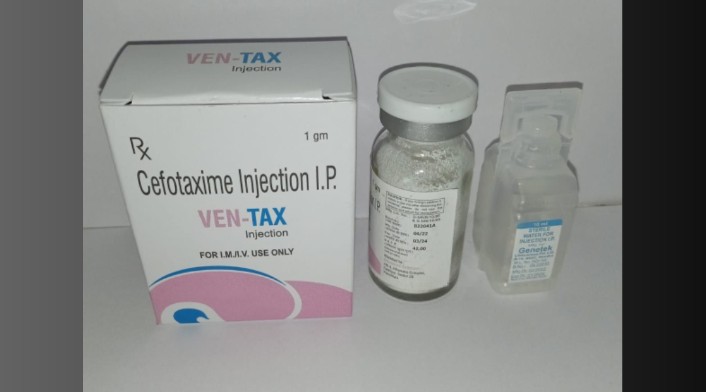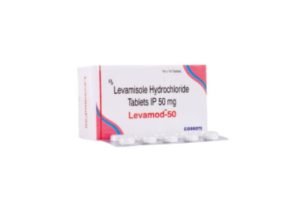
Cefotaxime: Full Review
Cefotaxime is a third-generation cephalosporin antibiotic used to treat a variety of bacterial infections. It has a broad spectrum of activity, including against many Gram-negative bacteria, and is often used in severe infections and hospital settings.
1. Mechanism of Action
Cefotaxime inhibits bacterial cell wall synthesis by binding to penicillin-binding proteins (PBPs) located in the bacterial cell wall. This binding prevents the formation of cross-links between peptidoglycan layers, weakening the cell wall and leading to bacterial lysis and death. Cefotaxime is bactericidal, meaning it kills bacteria rather than merely inhibiting their growth.
2. Uses
Cefotaxime is used to treat a wide range of infections, including:
- Respiratory Tract Infections: Such as pneumonia and bronchitis.
- Urinary Tract Infections (UTIs): Including pyelonephritis and cystitis.
- Skin and Soft Tissue Infections: Such as cellulitis and wound infections.
- Sepsis: Systemic infections that can lead to severe complications.
- Menigitis: Infections of the central nervous system.
- Bone and Joint Infections: Such as osteomyelitis.
- Abdominal Infections: Including peritonitis and intra-abdominal abscesses.
Cefotaxime is particularly useful in treating infections caused by Gram-negative organisms and is often used in combination with other antibiotics for broader coverage.
3. Dosage and Administration
Cefotaxime is administered parenterally, usually intravenously (IV) or intramuscularly (IM). Dosage depends on the type and severity of the infection:
- Adults: Typically 1 to 2 grams IV/IM every 8 hours, with doses up to 12 grams per day for severe infections.
- Children: 50 to 100 mg/kg per day, divided into 2 to 4 doses.
4. Contraindications
Cefotaxime is contraindicated in:
- Patients with hypersensitivity to cephalosporins or penicillins (due to potential cross-reactivity).
- Patients with a history of severe allergic reactions to beta-lactam antibiotics.
- Severe renal impairment: Dose adjustments are required for patients with significant kidney dysfunction.
5. Side Effects
Common side effects of cefotaxime include:
- Gastrointestinal issues: Nausea, vomiting, diarrhea, and abdominal pain.
- Allergic reactions: Rash, itching, and in rare cases, anaphylaxis.
- Hematologic effects: Rarely, leukopenia, thrombocytopenia, or eosinophilia.
- Renal effects: Rare instances of interstitial nephritis or acute kidney injury.
- Injection site reactions: Pain, redness, or swelling at the injection site.
6. Drug Interactions
- Anticoagulants: Cefotaxime can enhance the effects of anticoagulants like warfarin, increasing the risk of bleeding.
- Probenecid: May increase cefotaxime levels by inhibiting its renal excretion.
- Other nephrotoxic drugs: Caution is advised when used with other drugs that affect kidney function.
7. Special Precautions
- Renal Function: Dose adjustments are needed for patients with renal impairment to avoid toxicity.
- Allergies: Patients with a history of penicillin allergy should be monitored for potential cross-reactivity with cephalosporins.
- Superinfections: Long-term use can lead to the development of resistant organisms or fungal infections.
8. Resistance
Resistance to cefotaxime can develop through various mechanisms:
- Beta-lactamase production: Enzymes that break down cefotaxime, reducing its effectiveness.
- Altered PBPs: Bacteria may alter their PBPs to reduce cefotaxime binding.
- Efflux pumps: Some bacteria may pump cefotaxime out of the cell before it can act.
9. Storage and Stability
Cefotaxime should be stored at room temperature, away from moisture and heat. The reconstituted solution should be used within 24 hours if stored at room temperature or within 48 hours if refrigerated.
10. Summary
Cefotaxime is a third-generation cephalosporin with a broad spectrum of activity against many Gram-negative and some Gram-positive bacteria. It is used in the treatment of severe infections, including respiratory tract infections, UTIs, sepsis, and meningitis. While generally well-tolerated, cefotaxime can cause gastrointestinal disturbances, allergic reactions, and other side effects. Careful consideration of patient allergies, renal function, and potential drug interactions is essential for effective and safe use.







